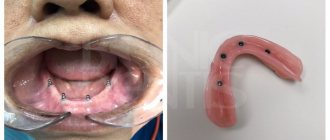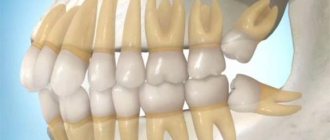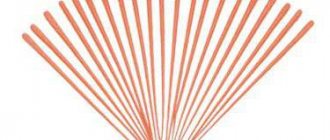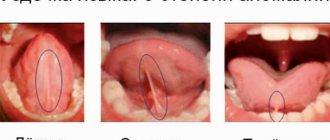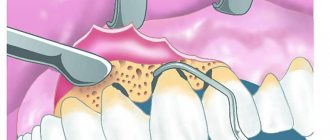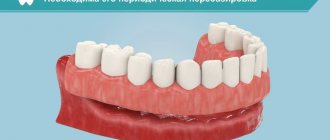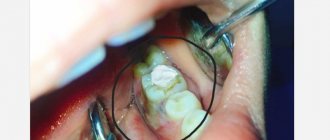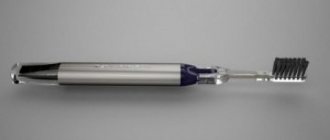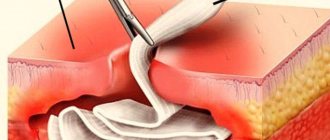February 12, 2020 Last revised: September 12, 2020 Bite correction
Before we find out why, when and how mouth guards are used for bruxism, and also learn about their varieties, let’s find out what the disease itself is. It has several manifestations: bruxism can be called grinding and knocking of teeth, slurping, noisy swallowing of saliva. Although in general practice, for the most part, this term is applied specifically to teeth grinding.
An involuntary form of bruxism is characteristic of an unconscious state (during sleep) and can last up to several minutes. The causes of bruxism can lie both in the physiological plane, caused by excessive tone of the masticatory muscles, and in the psychological plane, when complexes suppressed from childhood break out from the subconscious, during attacks of anger and irritation.
Neutralization of bruxism
Bruxism affects up to 60% of children and about 12% of adults. But the data for adults is unreliable - who will record this phenomenon in lonely people in old age, when they are left alone? So the problem can be considered global; this condition occurs in people of all ages, genders and races, and regardless of their social status.
The load on the teeth during grinding with their gradual loosening, as well as the abrasion and crumbling of the enamel, can be neutralized by a mouthguard applied before bedtime.
Anti-bruxism mouth guards for children and adults
There is not a single person whose shape of the dental arches of the upper and lower jaws would be similar. It's like fingerprints. Therefore, it will be of no use if you buy an impersonal “just a mouthguard” on websites; it is impossible to customize it individually. Silicone is not a material that, once frozen, can arbitrarily change its shape.
Therefore, you need to purchase a mouthguard in specialized dental institutions, after measurements and impressions made specifically from your jaw.
There are practically no differences between children's and adult mouth guards - except in size. And also, perhaps, in the degree of rigidity of the material. For a child, they may prescribe the production of not just one, only for the upper or lower jaw, but for both at once. During bruxism in a child, baby teeth are at greater risk of being broken or losing enamel that is weaker than that of permanent teeth.
Benefits of mouth guards
Mouth guard placed on teeth at night:
- It prevents teeth from closing when the jaw muscles experience spasm during sleep.
- Over time, jaws with mouthguards remember the position in which they find themselves due to their presence.
- Doctors have established a connection between the use of a mouth guard for bruxism and a reduction in the risk of apnea (short-term, from seconds to a minute, stopping breathing during sleep).
- Reduces muscle pain: the collision of the dental surfaces of the upper and lower jaws is not so harsh, the contact is shock-absorbing.
- If the bite is incorrect, the use of overhead splints prevents the further development of pathology.
- Evenly distributes the load on the teeth and prevents deformation of braces or permanent dentures.
- The prerequisites for loose teeth disappear.
For adults, mouthguards can be made from either silicone or cheaper hypoallergenic plastic. They are not used during the day due to their greater massiveness and density. They also interfere with normal pronunciation and are visible in the mouth. Which, however, does not interfere with their use at night.
Treatment of bruxism with mouthguards is aimed at developing the reflex not to close the teeth completely, which is only possible in children, with their more flexible psyche.
In adults, the main purpose of a mouth guard is to protect teeth from destruction during spontaneous muscle-jaw spasms. In practice, it turns out that such a tire takes the blow and instead of abrading the enamel, it deforms and the plastic becomes unusable.
And since the requirements for night guards are less stringent than for day guards, they are cheaper.
Mouthguards will not help an adult get rid of bruxism. By wearing them constantly, the patient gets rid of further destruction of his teeth. In the meantime, while he is wearing them, you can undergo a course of treatment from a good psychologist and neurologist or get rid of old diseases in the form of defects of the jaw joint or malocclusion.
Characteristics of the pathology
Bruxism is an involuntary patterned, stereotypical movement made by the lower jaw, causing friction or strong compression of the dental elements. There are daytime and nighttime forms, taking into account the period of occurrence of attacks. In the case of daytime bruxism, the pathological activity is semi-voluntary. The intensity of pathological movements during the day increases under the influence of stress, emotional experiences, and anxiety.
The nocturnal form is characterized by pathological activity of the lower jaw during sleep. During an attack, the patient clenches his teeth 10 times harder than when chewing food. Close people and relatives of the patient clearly hear creaking and grinding of teeth, resulting from strong compression and friction of the jaws. There are primary (idiopathic) and secondary forms.
In the second case, teeth grinding occurs against the background of a primary disease or pathological process. The diagnosis is made on the basis of clinical manifestations, medical history, results of instrumental examination (polysomnography, electromyography, identification of occlusal obstacles, unwanted contacts when closing dental elements using brux checkers).
The nocturnal form occurs with a frequency of about 13-17% of cases, the daytime form - about 22-32% of cases. The pathology is diagnosed with equal frequency among men and women. According to statistics, there is a tendency towards a decrease in the prevalence of the disease among older people.
A mouthguard for bruxism is used in dental practice as part of the comprehensive rehabilitation of patients with identified defects in dental tissue. With bruxism, the service life of orthopedic structures and restorations of dental tissue is significantly reduced, which necessitates the need for simultaneous correction of teeth grinding.
Possible causes of bruxism
- Congenital or acquired defects of the jaw caused by colds, infectious diseases or injuries.
- Dental problems. Uncomfortable dentures and braces, unsuccessfully installed fillings made of poor quality material, incorrect bite. With the latter, a person unconsciously tries to put his teeth in the correct position, and since the process is not controlled, the chewing surfaces make a grinding sound.
- It is possible that there are worms in the body - the relationship with this is not obvious, but parasites always cause a deficiency of B vitamins, and their deficiency, in turn, affects problems with emotional stability.
- Psychological trauma or prolonged stress, psychosis, depression, which can cause spasm in the masticatory-jaw muscles.
If in children bruxism is most often caused by physiological reasons, then in adults it is caused by psychological ones.
In this regard, the opinions of psychoneurologists are interesting: according to them, during the day a person is distracted from his pathological state by many problems, but the muscles “remember” their usual work and as soon as peace sets in, the affective charge accumulated during the day is realized in attacks of bruxism.
All about bruxism.
Bruxism is paroxysmal contractions of the masticatory muscles, which are characterized by involuntary closing of the jaws and grinding of teeth.
Most often, this disease manifests itself at night, when a person is sleeping; it occurs much less frequently during the day. In any case, this disorder negatively affects the condition of the dental units; they can become loose, and sometimes their surface is very worn out. Determining whether you suffer from bruxism is quite simple: ask one of your close relatives to watch you in your sleep, but this request may cause some difficulties, because your observer will have to stay up all night. It is best, of course, to contact a dentist so that he can examine you and assess the condition of your teeth. You should make an appointment with a specialist if you are concerned about the following symptoms:
- After waking up, your head, neck, and back begin to ache.
- The appearance of ulcers on the mucous membrane due to “biting” the inner surface of the cheeks.
- Ringing and noise in the ears, migraine.
- Changes in the shape and size of the crown of the teeth.
All of these signs may indicate another serious illness, but it is possible that you are suffering from nighttime teeth grinding. To understand this problem, it is recommended to undergo a comprehensive diagnosis from a doctor.
Bruxism can develop in both adults and children. It is simply impossible to say exactly why this or that person experiences such attacks. But there are several factors that can affect the occurrence of involuntary jaw closure:
- Frequent worries, stress.
- Smoking.
- Caffeine abuse.
- Defects in the structure of the facial skeleton.
- The presence of dental anomalies: malocclusion, missing teeth, etc.
According to the results of research by psychologists, bruxism is a reflection of emotional distress; it occurs in people experiencing constant emotional stress. In reality, they suppress their feelings, and during sleep they express them by clenching their teeth.
If at first you may not recognize the night grinding, then with regular attacks lasting only a few minutes, the enamel will gradually wear away, and the condition of the jaw joints will noticeably deteriorate. To avoid serious complications, you need to get treatment, or rather, consult a dentist. One of the best options for protecting your teeth is to make a special mouth guard.
Mouth guard selection
Ideally, mouth guard selection is done in the dentist's office. There are standard night guards: the requirements for compatibility with the position of the teeth in the mouth are not as strict as for day guards.
In nocturnal animals, even the color can be arbitrary, even the most unnatural (green, blue, orange). They have greater rigidity than daytime ones.
Daytime ones are usually colorless and transparent, although, if desired, the dental technician can make them white or select the color of silicone or bioplastic to match the shade of your teeth.
If the mouthguards are for daily use, then the requirements for them include not only increased strength, wear resistance and invisibility to others. Day guards should not interfere with speech, ensuring clear articulation and intelligible pronunciation of all sounds.
It is impossible to make an exact adjustment to the dentition if the product is not created strictly individually. And this is only possible if an accurate impression of the teeth was first made. In this regard, the requirements for daily mouth guards are the same as for permanently worn prostheses. And they are comparable in price: in Moscow, making mouthguards for bruxism costs about 10-12 thousand rubles, in smaller regions, but still about 6-8 thousand.
For severe symptoms, repositioning or, as they are also called, resonating splints can be used. Their task is to change the position of the head of the jaw joint. The requirements for them are even stricter: the fitting is carried out more carefully than usual, several fittings are made before the final casting. If manufacturing is inaccurate, there is a risk of additional injury to the jaw joint. There are no such drops on the market, and they are prescribed by a doctor only after a thorough examination.
Treatment
The main method of symptomatic therapy is injection of botulinum neuroprotein locally into the facial muscles (temporal, pterygoid, located laterally - further from the median plane, masticatory). Local administration of botulinum toxin eliminates dysfunction, including pain and limited mobility, of the temporomandibular joint. Using a dental guard for bruxism is a common treatment option.
According to clinical studies, the effectiveness of wearing a mouth guard against bruxism is less than the result achieved after botulinum toxin injections. As an alternative to mouthguards, splints are used, the use of which is also associated with a lesser therapeutic effect. A polysomnography examination shows that a mouth guard for bruxism helps reduce pathological muscle activity for a short period of time (about 2-3 weeks).
Then nighttime teeth grinding resumes. The effect is observed when using a new night guard for bruxism, which necessitates the manufacture of another orthodontic device every 2-3 weeks. As part of complex therapy, the doctor may prescribe drugs - muscle relaxants, which relax the masticatory muscles.
Botulinum toxin injections and wearing a mouthguard are considered methods of symptomatic therapy. Pathogenetic therapy involves eliminating the causes that provoke teeth grinding. For this purpose, methods are used aimed at eliminating the consequences of stress, manifestations of neurosis and emotional tension.
How the mouth guard works
The principle of operation of a mouth guard against teeth grinding is based on the prevention of mechanical damage resulting from contact of the working surfaces of the teeth. The orthodontic structure is made of rubber or natural resins and has sufficient strength, elasticity and softness, which ensures comfortable use.
Modern models made from polyurethane polymer are coated with wear-resistant silicone with thermoplastic properties. The fitting procedure (precise fitting of parts) of this design involves heating it by immersion in hot water to a temperature of about 70 °C, which leads to softening and increased plasticity.
Afterwards, the device is put on the teeth and the patient is asked to close his jaws. At oral temperature, the material hardens. As a result, complete adhesion of the device elements and supporting tissues is achieved. Results and benefits of wearing a dental guard against bruxism:
- Preventing the destruction of hard dental tissues.
- Ease of use - the device is easy to remove and install.
- Elimination of manifestations of dysfunction of the temporomandibular joint as a result of fixation of the lower jaw in a physiologically correct position.
- Preserving the integrity of dental restorations and denture (orthopedic) structures.
- Preventing the displacement of dental elements.
- Prevention of malocclusion.
The mouthguard is worn at night, eliminates compression - excess pressure on the contact surfaces, protects the teeth from abrasion by relaxing the chewing muscles and by creating a protective layer between the upper and lower dentition. In some cases, mouthguards are effective in correcting disorders such as sleep apnea (short-term stops in breathing) and snoring.
The need for a mouth guard for bruxism: “pro” and “contra”
Positive points
- You can make mouthguards of any color and shade, including transparent ones. This will give complete invisibility, and this is important in the case of using splints for daytime wear, if spasms of the masticatory jaw muscles are not controlled by the patient.
- Putting on and taking off the structure is literally a matter of one second. This allows for timely hygiene procedures.
- The material of the mouth guards, food-grade plastic and silicone, is safe and hypoallergenic. At least, not a single case of rejection of the tray material due to its incompatibility with the body has been recorded.
- Custom-made mouthguards made by a dental technician have a minimal period of adaptation to them and do not interfere with diction. The softness and elasticity of silicone allows you to not feel the mouthguard in your mouth like a foreign object at all.
- Suitable for wearing by all ages.
- When a special bleaching solution or gel is added to the tray, it acts as a container for these bleaching agents and enhances their effect.
Negative
- First of all, cost, especially considering that for the treatment of bruxism in children, you need to prepare at least one spare set of mouth guards due to their possible rapid wear.
- These removable splints should not be used in case of epilepsy or mental disorders.
For those for whom bruxism actually brings both physical and psychological inconvenience, you need to know what procedures await him in the dental clinic.
Types of mouth guards
There are several types of mouth guards:
- Day cap.
Prescribed to patients with a complex form of the disease and used during the daytime. After an adjustment process that lasts 1-2 weeks, the discomfort from wearing the splint goes away. It is installed deep into the oral cavity, invisible to others, and does not interfere with conversation or while eating. To avoid complications and exacerbation of the disease, the installation of a mouth guard should be performed in a dental office.
- Night guard.
In a dream, a person cannot control his body, so a night guard for teeth is put on before going to bed. They are manufactured in a clinical laboratory, but unlike the day version, the night version is fixed in the mouth by the patient independently. It is not intended to be worn during the day, as its use for a long time can lead to various complications.
Dental guards used for sleeping or during the daytime are divided according to the manufacturing method:
- Thermoplastic.
Stages of making trays
Basic impressions are taken of the patient
The procedure is similar to taking an impression for dentures: an elastic material is placed on a standard impression bed for such cases, which is applied to the dentition. The resulting impression quickly hardens, and it is carefully removed, so as not to damage or disturb the picture of the impression, with the resulting dental imprint of the jaw.
Create a primary model
It is not yet made of silicone or plastic, but of plaster. Gypsum diluted with water and additives is applied to the impression, it hardens and gives an exact model of the future tire.
Product casting
Taking a cast plaster model as a basis, a silicone model is created using a hot molding machine under high pressure and temperature, which is also laminated after the process is completed.
The tire undergoes a lamination process to make its outer layers relatively rigid while maintaining softness on the side that is adjacent to the teeth and gums.
Fitting
A fitting of the splint is done, with an assessment of the patient’s well-being with it, a trial period of wear is given, then the final adjustment of the internal relief of the mouthguard is made.
Mouthguard Care
In order for anti-bruxism mouthguards, ready-made or individual, to serve for a long time, and their wearing does not cause harm to health, the structure should be properly cared for. You do not need to use special cleaning products for this. It will be enough to rinse the product under running water after each use.
Do not wash the mouthguard in hot water or pour boiling water over it, as it may become deformed. If there are food particles left on the structure or it has changed color, which can happen from drinking drinks with dyes, then you can clean it with toothpaste and a brush.
Mouthguards should be stored in plastic containers with holes for air circulation. Do not leave the case in direct sunlight. Even minor defects and damage to the tire make it unsuitable for further use.
If a mouthguard for bruxism, day or night, becomes deformed while being worn, you need to show it to your doctor, as this may mean that the disease is progressing.
These rules apply to all types of structures, especially individual ones, which in case of deformation will require re-manufacturing.
